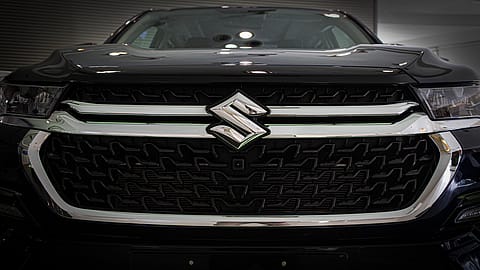Maruti Suzuki reclaims 45% market share in January
The market share of India’s largest carmaker rose to 45.30% in January, according to data released by the Federation of Automobile Dealers Associations of India (FADA).

Maruti Suzuki India Ltd sold 2.11 lakh cars in January 2025, up 20% compared with the same month last year, taking the market share of India’s largest carmaker to 45.30%, according to data released by the Federation of Automobile Dealers Associations of India (FADA).
Hyundai Motor India stood a distant second with 12.85% market share in passenger vehicles, followed by Tata Motors with 11.57% share.
Passenger vehicle registrations jumped 15.5% to 4.65 lakh units in January aided by demand for “2025 model year” cars. Some of this spike stems from December purchases registered in January for a “2025 model year” advantage, says FADA President C S Vigneshwar.
Urban markets inched up from 60.8% to 61.8% share, but rural posted a higher year-on-year growth of 18.57% versus urban’s 13.72%, the auto dealers’ association says.
“Many dealers noted improved demand but also pointed to last year’s heavy discounting, which helped clear older models and shift registrations. Inventory levels have improved, dropping by around five days to 50–55 days, suggesting improved supply-demand balance,” says Vigneshwar.
Two-wheeler sales saw a 4.15% year-on-year growth, with urban markets gaining share from 41.6% in December to 43.7% in January, as per FADA. Urban sales also outpaced rural on a yearly basis, growing by 4.54% compared to 3.85%. Dealers cite new model launches, marriage season demand and improved financing as key growth drivers. However, concerns about high interest rates, rural liquidity challenges and market uncertainty still linger.
Commercial Vehicle sales increased by 8.22% to 99,425 units. While higher freight rates and passenger carrier demand provided a boost, many dealers cited low cash flow, strict financing policies and sluggish industries (like cement and coal) as major hurdles. Sentiments in rural regions remained notably subdued, compounded by limited new products.
Recommended Stories
In its near-term outlook, FADA says nearly half of dealers (46%) anticipate growth in the coming month, while 43% expect sales to stay flat and 11% foresee a dip. This blend of sentiments underscores the industry’s complex landscape—where bright spots are tempered by ongoing challenges.
On the positive side, dealers report that the continuing marriage season, fresh product launches and strategic promotional activities are likely to sustain customer footfalls. Furthermore, improved inventory management, better financing options from select lenders and backlogged orders in certain segments such as commercial vehicles add to the sense of guarded confidence. With supportive policies and a post-budget lift in consumer sentiment, many believe February could see a stable or slightly elevated sales curve.
“At the same time, shorter working days, pockets of weak rural liquidity and inflationary pressures remain areas of concern, potentially limiting the extent of any upswing. Strict lending criteria, costlier vehicles and subdued demand in certain industrial sectors could weigh on overall performance,” says FADA.
India’s auto retail sales stand poised for modest gains if these headwinds ease, believes FADA. With nearly half of surveyed dealers still expecting an uptick, a collective sense of optimism prevails, suggesting that the industry is ready to ride out near-term challenges and look forward to brighter days ahead.
(INR CR)